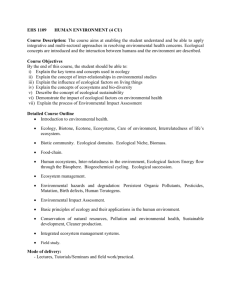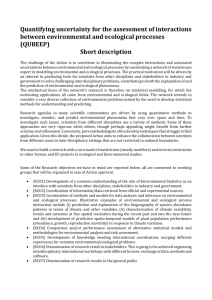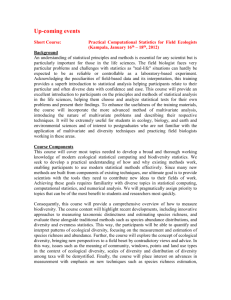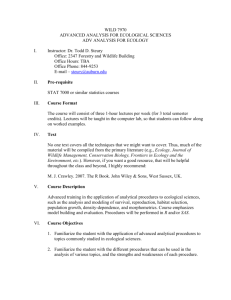Environmental Monitoring
advertisement
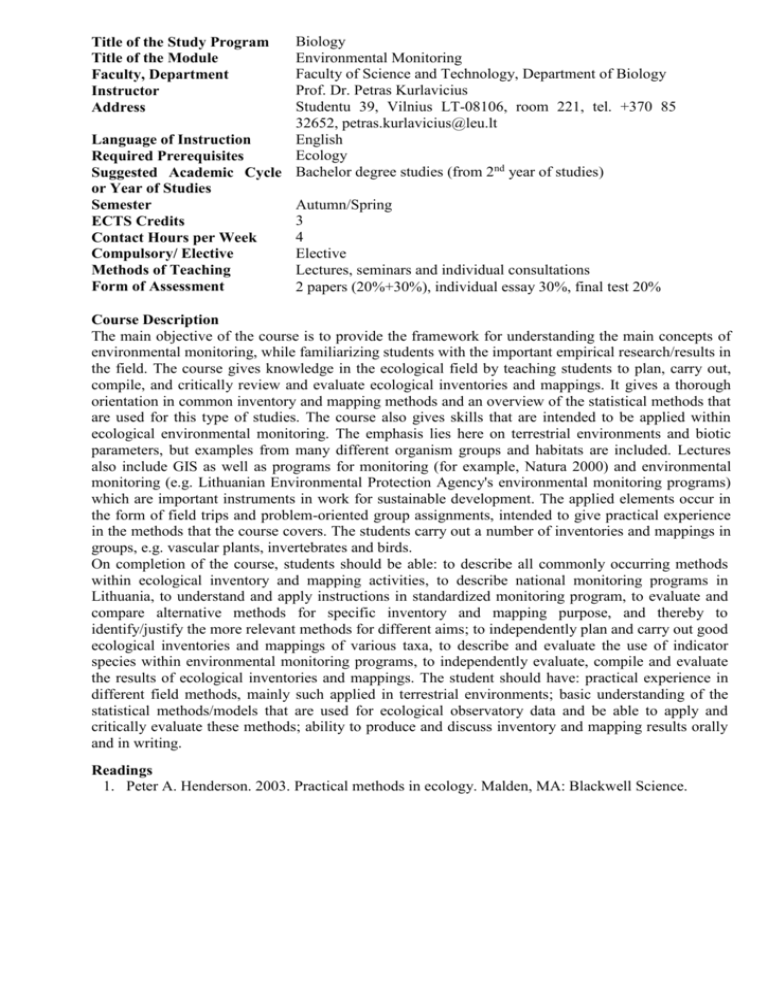
Biology Environmental Monitoring Faculty of Science and Technology, Department of Biology Prof. Dr. Petras Kurlavicius Studentu 39, Vilnius LT-08106, room 221, tel. +370 85 32652, petras.kurlavicius@leu.lt English Language of Instruction Ecology Required Prerequisites Suggested Academic Cycle Bachelor degree studies (from 2nd year of studies) or Year of Studies Autumn/Spring Semester 3 ECTS Credits 4 Contact Hours per Week Elective Compulsory/ Elective Lectures, seminars and individual consultations Methods of Teaching Form of Assessment 2 papers (20+30), individual essay 30, final test 20 Title of the Study Program Title of the Module Faculty, Department Instructor Address Course Description The main objective of the course is to provide the framework for understanding the main concepts of environmental monitoring, while familiarizing students with the important empirical research/results in the field. The course gives knowledge in the ecological field by teaching students to plan, carry out, compile, and critically review and evaluate ecological inventories and mappings. It gives a thorough orientation in common inventory and mapping methods and an overview of the statistical methods that are used for this type of studies. The course also gives skills that are intended to be applied within ecological environmental monitoring. The emphasis lies here on terrestrial environments and biotic parameters, but examples from many different organism groups and habitats are included. Lectures also include GIS as well as programs for monitoring (for example, Natura 2000) and environmental monitoring (e.g. Lithuanian Environmental Protection Agency's environmental monitoring programs) which are important instruments in work for sustainable development. The applied elements occur in the form of field trips and problem-oriented group assignments, intended to give practical experience in the methods that the course covers. The students carry out a number of inventories and mappings in groups, e.g. vascular plants, invertebrates and birds. On completion of the course, students should be able: to describe all commonly occurring methods within ecological inventory and mapping activities, to describe national monitoring programs in Lithuania, to understand and apply instructions in standardized monitoring program, to evaluate and compare alternative methods for specific inventory and mapping purpose, and thereby to identify/justify the more relevant methods for different aims; to independently plan and carry out good ecological inventories and mappings of various taxa, to describe and evaluate the use of indicator species within environmental monitoring programs, to independently evaluate, compile and evaluate the results of ecological inventories and mappings. The student should have: practical experience in different field methods, mainly such applied in terrestrial environments; basic understanding of the statistical methods/models that are used for ecological observatory data and be able to apply and critically evaluate these methods; ability to produce and discuss inventory and mapping results orally and in writing. Readings 1. Peter A. Henderson. 2003. Practical methods in ecology. Malden, MA: Blackwell Science.




